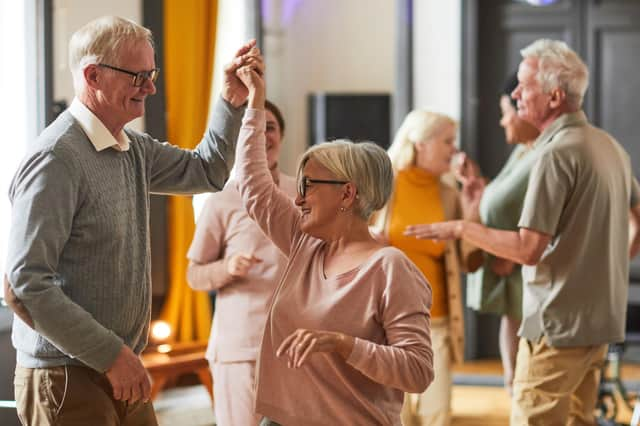Dr's Casebook: Reverse signs of aging in the brain by dancing


Dr Keith Souter writes: Dancing is extremely good for you, because it is great exercise. Not only that, but the process helps develop coordination and balance. A published study carried out in Magdeburg in Germany suggests that elderly people can reverse signs of aging in the brain by performing exercise. More than that, they found that dancing was the most effective exercise.
This was a small, but sophisticated study, using MRI scans of the brain of participants to assess the effects. The researchers recruited 26 people with an average age of 67 years onto the study. Fourteen were allocated to a dancing group and 12 to an exercise only group. Over an 18-month period the dancing group were given a weekly course of dance sessions, where they had to learn different dances. The exercise group was given endurance and flexibility training lessons.
Advertisement
Hide AdAdvertisement
Hide AdThe MRI scanning showed that both groups showed an increase in the hippocampus regions of the brain. The increase was greater in the dancing group. The dancers also showed consistently better balance than the exercise group.
The hippocampus is a seahorse shaped area on each side of the brain. The name comes from the Greek ‘hippos’ meaning horse and ‘kampos’, meaning sea-monster. In biology, Hippocampus is the genus for the seahorse. It is an area that is important in balance and memory and orientation. It is important, as it can be affected in Alzheimer’s disease.
The Hippocampus also acts as a memory indexer by sending memories out to the appropriate part of the cerebral hemisphere for long-term storage and it also organizes retrieval of those memories. Thus, when you get a smell or a taste that instantly transports you back to an earlier time in your life, that is because your hippocampus, your little seahorse has been stimulated to work.
Dancing helps those two little seahorses in the brain, so to keep your brain young, as they say on Strictly – keep dancing!